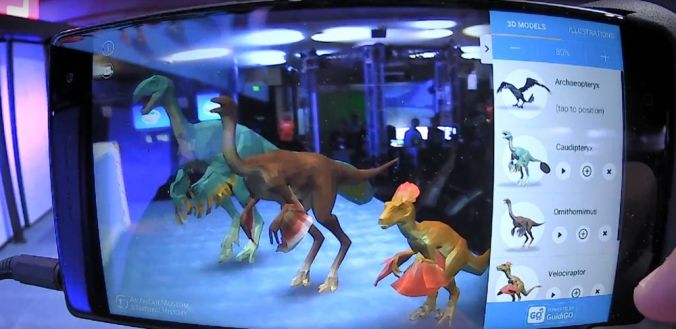Click here to read complete Paper
Introduction
Video games, computer games, the internet, e-mail, mobile phones and television along with other media technologies have become an integral part of the lives of the modern society. The article by Siobhan McGrath discusses the impact of new media technologies on social interactions within the household. The review will give a precise analysis of the key elements that are mentioned within the article. Moreover, it will develop the critical analysis of the article.
Review of the article
Review of the abstract
An effective abstract will be able to provide a brief summary of the research paper and help the reader understand the purpose of the study. The abstract of the article by McGrath (2012) has provided an extensive background of the research problem as the author establishes an analysis of whether modern technology has contributed towards bringing together families or led to the privatisation within families. The abstract has provided with the data collection method that will be used to carry out the research along with the tools that will be used to collect data. While the abstract has provided a detailed overview of the research finding, it failed to mention the number of respondents that were chosen to carry out the research.
Review of Introduction
The introduction of the article has given a detailed synopsis of the issue at hand as it mentions that a large number of families are heavily dependent on the new media technologies in their daily routines. The author provides details of his personal experience with technology and his family that led to the formulation of this report. The introduction serves it purpose by giving the reader an extended idea about the article and what it intends to achieve. The author provided details about the purpose of the article and what value it will hold for individuals and the society and assist in finding solutions for the problems.
Review of the literature
Similar to the approach adapted in article writing, the current article has provided a detailed review of relevant literature that will be crucial for the understanding of the research topic to the readers. The review focused on family and established that the future of family structures is questioned in the modern society and the decline in the nuclear family household. The author has analysed the traditional family role change and its influence on the youth (Cheal, 2002; Lalor, et al., 2009). The review of past author’s views on family is detailed to support the research problem as the author specifically emphasised on the literature related to the Irish families. However, it can be a limitation as the readers might not be from Ireland and will not be able to relate. The literature also provided a limited review of the household and what is incorporated in the household. Apart from the household and family, the literature has provided an analysis of the importance of communication and social interaction. The author used past studies by different authors to emphasise on their importance in the modern society. The family leisure and family functioning are dependent on the family communication (Smith, et al., 2009).
Moreover, the literature reviewed new media technology in the household and targeted the impact of new technology on the dynamic of the family relationship. The children are heavily influenced by technology. The lack of qualitative representation in the literature was covered with a detailed analysis of the impact of technology on children in the UK as the study established that 98% of the children lived with families that had cell-phones and 75% had television (Plowman, et al., 2008). In addition to that, the literature review focused on the digital divide and the new media technologies facilitating social interaction. Furthermore, the new media technologies impeding the social interaction were discussed in the literature review. It helped understand that the childhood of kids in the modern society has become toxic (Plowman, et al., 2010.
On the whole, the literature was extremely through, but the lack of statistical analysis from past studies and the use of theories was one of the key concerns with the literature review. The use of results from past studies on the different variables would have been integral to supporting the literature.
Review of methodological approach
The methodological approach adapted by the author is qualitative research method. The method used by the author suited the purpose of the author as it helped in the generation of primary data that will be able to contribute to the research problems. The author utilized participant observation and semi-structured interviews to develop rich information. It has been observed that the author combined participant observation and intensive interviewing to develop a valid research. The author utilized a non-probability sampling technique of snowballing which suited the premise of the research. The methodology provided details about the sample size and established 17 individuals for observations. The author also provided details on how the observation was carried out. In addition to that, details regarding the semi-structured interviews were provided in details to help the readers understand the thought press behind the selection of interviewees. The author emphasised on the ethical considerations that have been followed to ensure that nothing unethical is done.
Review of discussion of findings
The findings provided a detailed analysis of the results that were established from the data collection that was carried out. The author concluded that every household that was a part of the study was immersed in new media technologies that include television, cell-phone, internet access, etc. Furthermore, the results established that the location of new media technologies has an impact on social interaction in the household. The key finding from the observations was that the technologies have led to social isolation within household and people have become privatised. Overall, the findings in the article are very detailed and cover every single aspect of the research problem.
Review of conclusion
The conclusion provided a summary of the findings and had thoroughly covered every single aspect of the topic and the work carried out in the article. Moreover, the conclusion provided the limitations in the study.
References
Cheal, D. J. (2002). Sociology of Family Life. Basingstoke: Palgrave.
Lalor, K, Roiste, A. and Devlin, M. (2009). Young People in Contemporary Ireland. Dublin: Gill & Macmillan
McGrath, S. (2012). The impact of new media technologies on social interactions within the household. Electronic Culture and Social Change
Plowman, L., McPake, J. and Stephen, C. (2008). Just Picking it Up? Young Children Learning with Technology at Home. Cambridge Journal of Education. 38(3):303-319.
Plowman, L., McPake, J., and Stephen, C. (2010). The Technologisation of Childhood? Young Children and Technology in the Home. Children & Society. 24(1):63-74.
Smith, K. M., Pattia A. F. and Ramon B. Z. (2009). An Examination of Family Communication within the Core and Balance Model of Family Leisure Functioning. Family Relations. 58:79-90.





 Lenovo’s phone visualizes virtual elements into the real world
Lenovo’s phone visualizes virtual elements into the real world